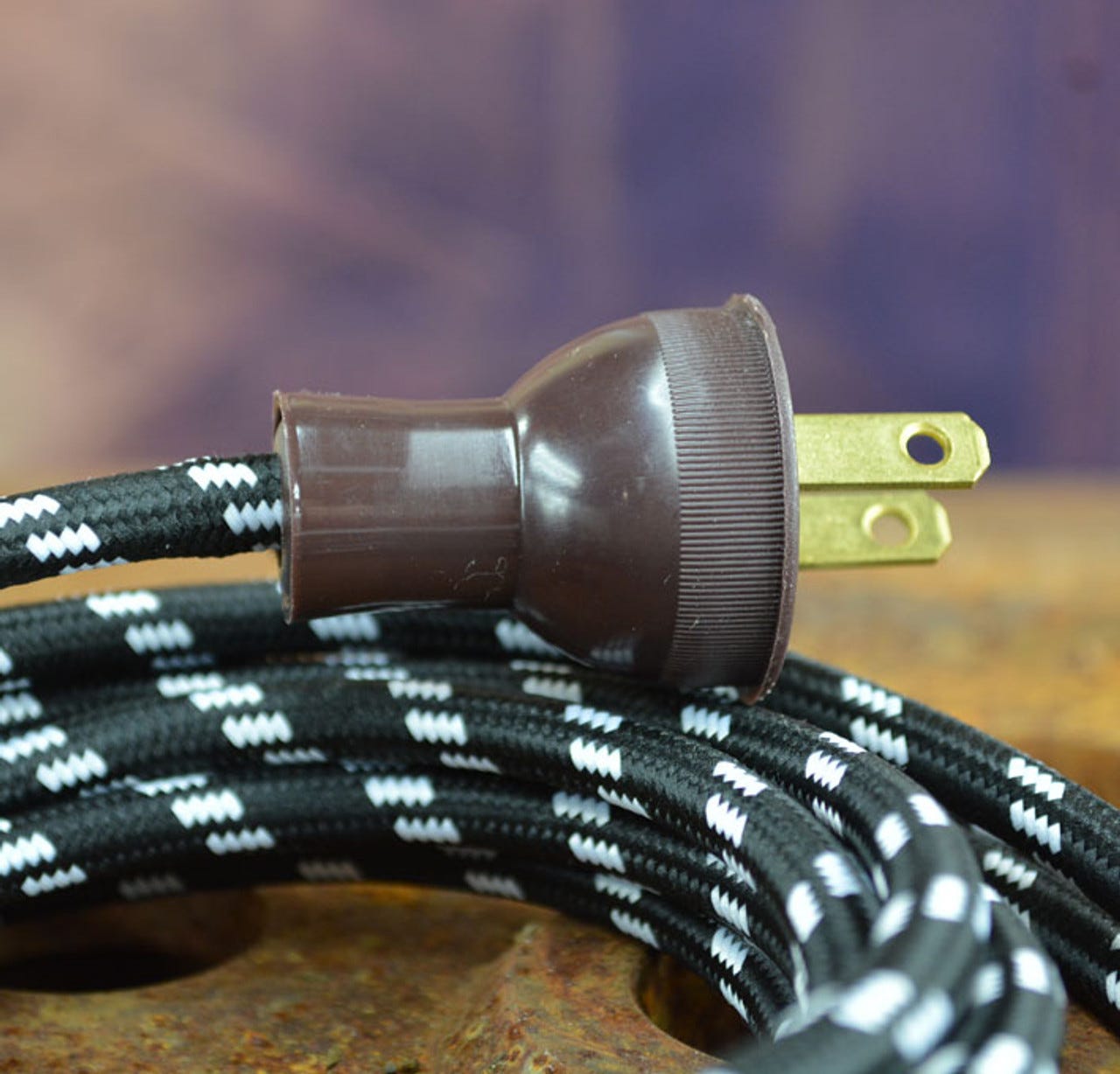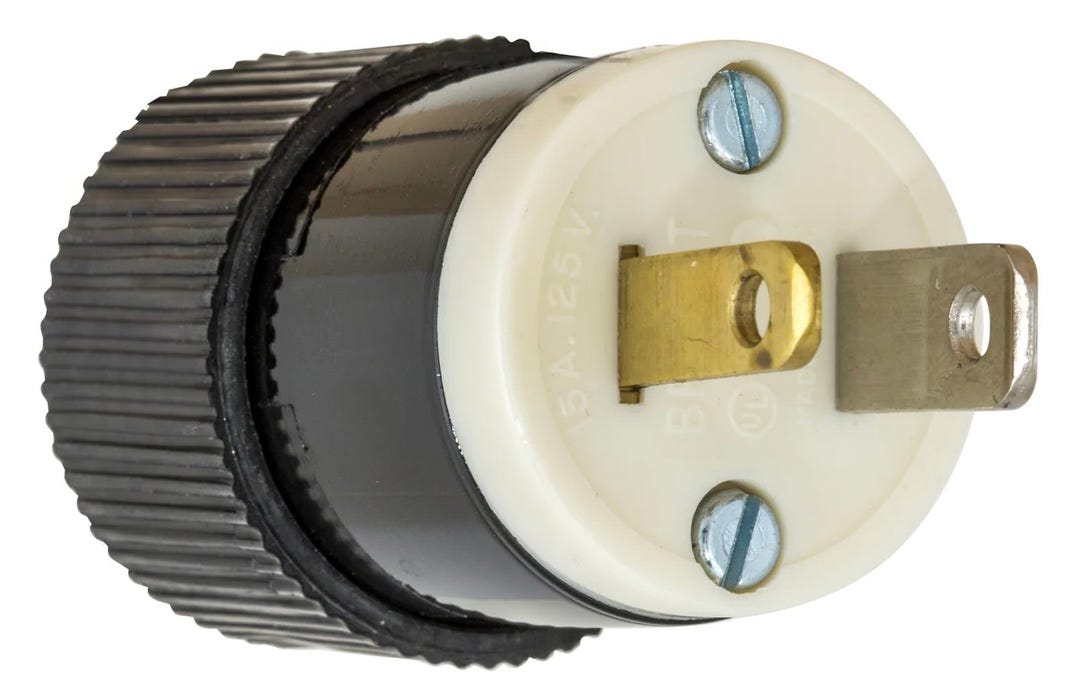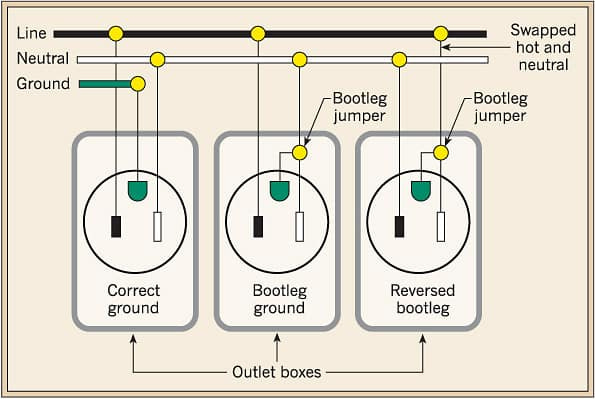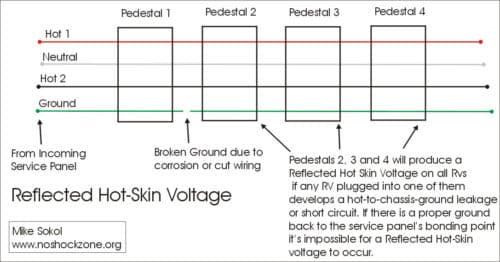Reversed Polarity and Hot-Skin…
Does Reversed Hot/Neutral Polarity always cause a hot-skin voltage?
Dear Mike,
Your No~Shock~Zone articles are some of the best I’ve ever read about RV electricity. Thanks for educating all of us “non-electrical” types.
So here’s my question: During a trip on my boat to the Erie Canal, we had one guy checking electrical outlet polarity, something I never really quite understood. He found many outlets with the wrong polarity but didn’t seem too worried about it. So can a reversed polarity cause a hot-skin shock? –Fred S.
Dear Fred,
I often get this question asking if reversed polarity can cause a hot-skin condition that can shock you. And the short answer is “not now, but it used to.” At least it did prior to the 1960s. So let’s take a quick trip in the way-back machine to review exactly what reverse polarity is, and why it’s not an immediate danger nowadays.
In the early to mid 1900s there were no polarized outlets in homes. Every electrical plug and outlet had the same size slots on both sides so you could insert a non-polarized plug either way. This effectively reversed the two “poles” of the receptacle, and hence the term ”pole-arity.” There was a 50-50 chance that the plug had been inserted with “reversed polarity” which have would indeed created a hot-chassis voltage on some appliances such as a tube radio or guitar amplifier. And it could definitely shock or possibly even kill you.
I think this is where the idea that reversed polarity on a plug would energize a RV chassis with a hot-skin voltage. It was 100 percent true back in the first half of the 20th century, but not now. That’s because the electrical code guys got smart and required plugs and receptacles be made with two different size slots that could only be plugged in one way.
So now the taller slot is neutral, and the shorter slot is hot. This prevented you from plugging in something with reversed polarity. Later in the 1960s, isolation transformers and double insulation were added to all household tools and appliances, so that even an outlet accidentally wired with swapped white and black wires internally couldn’t create a hot-skin shock hazard.
Eventually safety grounds were added to everything, and we now have the modern 3-prong NEMA 5-15 plug and receptacle we all know and love. And there’s no way it can be plugged in with reversed polarity, unless the electrician who wired it got his wires crossed (literally). But even if that does occur the electrical code is designed so well that under normal circumstances simply swapping the hot (black) and neutral (white) wires inside an electrical outlet still can’t create a hot-skin voltage on an RV.
Read more about how 3-light testers work HERE
Yes, an inexpensive outlet tester like the one from Southwire shown above does a great job of identifying reversed polarity outlets – as long as it’s not an RPBG (Reverse Polarity Bootleg Ground) or Reflected Hot-Skin Voltage, both of which I’ve previously covered.
Read more about Reverse Polarity Bootleg Grounds HERE
Read more about Reflected Hot-Skin Voltage HERE
What’s the big picture?
So in the final analysis a reversed polarity outlet probably isn’t immediately dangerous because modern appliances have isolation transformers and double insulation, plus all RVs should have their neutral and ground wires separated in their power panel. It’s only when the shore power ground wire is broken or disconnected and a leakage occurs that a hot-skin voltage is possible on an RV.
However, a reversed polarity outlet in a pedestal is a sure sign that it was never tested after installation and wouldn’t pass inspection, so who knows what else is wrong? And just two wrong things in an electrical circuit can create a deadly hot-skin condition. So report all reversed polarity outlets and get them corrected. It’s the right thing to do…
Let’s play safe out there… Mike












Yes I remember sticking the knife in the old toaster, avoiding touching the sides, to retrieve a stuck piece is toast. A few zaps with the knife. The English muffins seemed to be the worst!